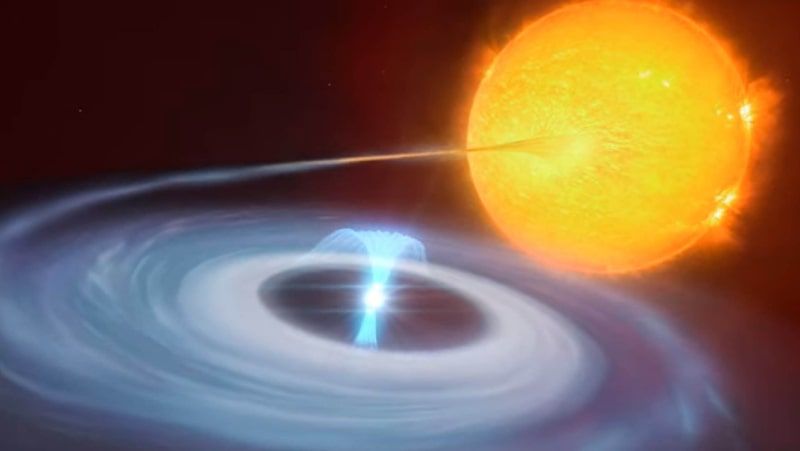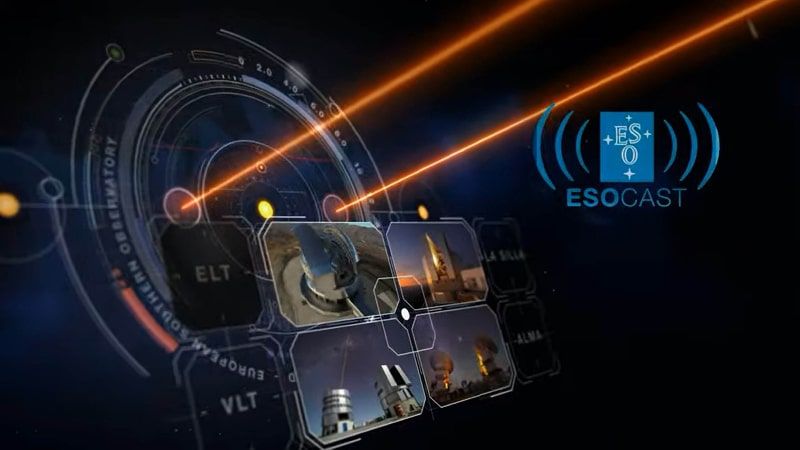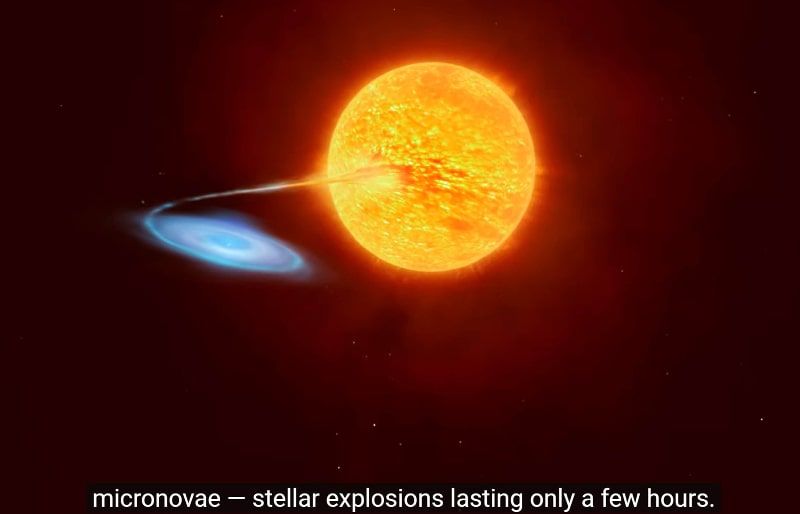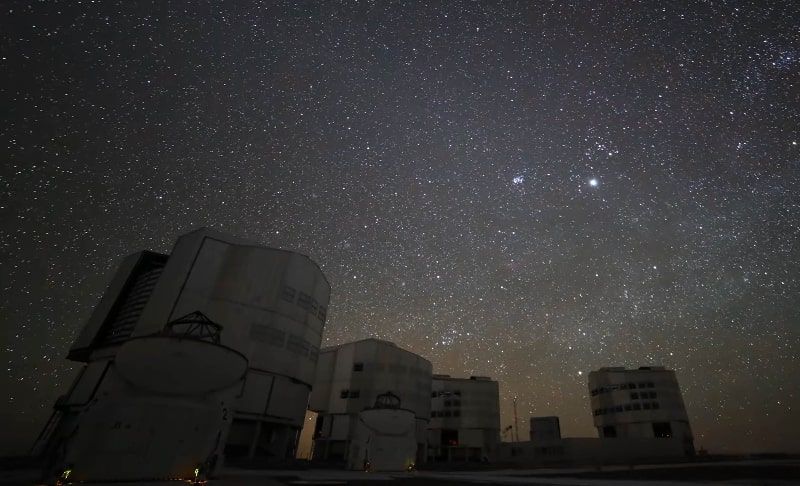Micronova outburst can burn 20 billion kilos of explosives
The discovery of a new type of stellar explosion called micronova, which can burn the mass equivalent to several mountains such as Mount Everest, considered the highest on Earth.

Yuri Cavecchi, an expert from the Institute of Astronomy (IA) of the UNAM, contributed to the discovery of a new type of stellar explosion called micronova, which can burn the equivalent mass of several mountains such as Mount Everest, considered the highest on Earth.
Cavecchi explained in an interview that this new type of phenomenon occurs in stars called white dwarfs in binary systems, which have a mass similar to that of our Sun, but the size of the Earth. They are called binaries when they have a companion and both revolve around each other. If the companion is less massive and is very close to the white dwarf, it loses some of its mass, which is transferred to the white dwarf.
"Micronovae are nova-like and practically explosions on a white dwarf, smaller and last less, for this reason we have called them micronovae... we have found them in systems that prevalently have a magnetic field. The magnetic field lines capture the matter that reaches them from the companion and attract it to their pole. When there is enough matter, they explode," the researcher explained.
With the help of NASA's Transiting Exoplanet Survey Satellite (TESS) telescope and the X-shooter instrument installed on the European Southern Observatory's Very Large Telescope, the specialists observed the explosions throughout 2021. And they estimate that it can destroy the mass equivalent to approximately 3.5 billion Pyramids of Giza together, in a few hours.

Micronovae are in addition to supernovae, which are considered among the largest and most energetic explosions in the cosmos. On the other hand, there are novae, which are less energetic and more frequent than supernovae and are associated with the outbursts of a white dwarf, which is part of a binary system and constantly receives mass from the star that accompanies it, the researcher specifies.
So what is the difference with micronovae? In the power and duration of the outburst, because although they are very powerful for a planet like Earth, they are small on an astronomical scale and less energetic than novae.
"The difference is that the matter accumulates at the magnetic pole; one can imagine it as a cylinder that is filled with material that reaches the white dwarf from the companion, the outburst is then much more localized and smaller than that of a nova, in the latter the outburst would cover practically the entire surface of the white dwarf," he said.
The finding, led by Simone Scaringi of Durham University in the United Kingdom, challenges the understanding of how these thermonuclear explosions occur in stars because although it is a micronova, the outburst can burn the equivalent mass of 20 billion kilograms of explosives.

Cavecchi joined the research, presented last April in the journal Nature, because he is a specialist in the study of neutron stars, which are the remnant of a supernova and, when they have a companion, can steal material from their companion by generating type 1 X-ray bursts.
"When Scaringi looked at the light curves or how the emission plume evolves during the micronova he said, 'ah, this is very similar to type 1 bursts!' We started talking and we consider that the mechanism that generates these bursts is very similar to the one produced in micronovae. We have identified many similar details in both phenomena," he described.
Micronovae, reads the paper published in Nature, are caused by the accumulation of hydrogen at the magnetic poles of the star, so their fusion occurs in a localized manner and because of the difference in the power of these phenomena, astronomers suggest that they could be very frequent, but they are so fast that it can be difficult to detect them in action.
It is believed that a white dwarf in a two-star system can steal material from its companion, mainly hydrogen, and as this gas falls on the surface of the "thief" the material is compressed, the temperature rises and the hydrogen atoms fuse into helium explosively, but to understand exactly how this phenomenon occurs during micronovae simulations are needed, which the UNAM astronomer will continue to collaborate on.

"We are beginning to understand this phenomenon, there is a lot to do, such as simulations, trying to truly understand how the matter arrives from the companion, how it behaves, if it starts to burn partially and stably before the explosion, or if it burns everything in an unstable way; and this is part of UNAM's contribution to the team," Cavecchi added.
From UNAM, the IA researcher will continue with the collaboration to carry out numerical simulations of the object, of the cylinder where the matter accumulates to study where the explosion starts and under what conditions it does, because through this we can learn about other similar systems; in addition to investigating the theories that explain this phenomenon.
"One thing that interests us a lot is to take new data and see how the emission increases and decreases, we want to see the evolution and how the temperature and position of the matter changes, details that will be extremely useful to characterize these phenomena. We have observational and theoretical work," Cavecchi concluded.




